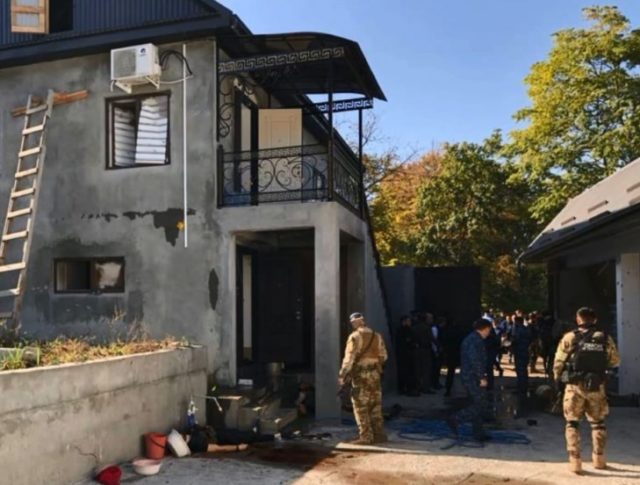
Chechnya and Ingushetia Exhibit Growing Signs of Destabilization
Publication: Eurasia Daily Monitor Volume: 17 Issue: 150
By:

Chechnya and Ingushetia saw a surprise surge in clashes between government forces and rebels in recent weeks. The government side has suffered casualties for the first time in months. It is too early to say if this uptick in violence represents a lasting trend or a temporary setback for the authorities, but experts warn that local tensions are intensifying.
On October 13, government forces surrounded and killed four alleged militants in Chechnya. The authorities introduced a counter-terrorist operation regime in the Oktyabrsky district of Grozny, where the suspects were located (Nac.gov.ru, October 13). Two officers of the Russian National Guard were killed in the incident, and one suffered heavy injuries. The officials pledged aid for the families of the killed service members, who appeared to be of Chechen origin (TASS, October 14). This was the first armed clash in Grozny in more than a year.
Separately, on October 11, government forces killed two other suspected militants. The incident occurred in Sernovodsky District, Chechnya, close to the border with the Republic of Ingushetia (TASS, October 11). Less than a week later (October 16), Ingushetian police announced the killing of a militant following the shootout between law enforcement and unidentified men in the city of Nazran (Interfax, October 17). The special operation in Ingushetia was the seventh known since the start of the year (Kavkazsky Uzel, October 17).
The governor of Chechnya, Ramzan Kadyrov played down the importance of these new attacks and denied their local origins. According to Kadyrov, the Chechen Republic has long ago destroyed all rebel groups on its territory. He suggested that the militants had come to Chechnya from abroad, namely Syria. The North Caucasus republic’s ruler claimed that officials had prior information of their arrival and prepared to capture them (Telegram, October 13). However, Kadyrov failed to explain why two officers of the Russian National Guard were killed in the armed clash if the authorities knew about the militants’ imminent entry and were prepared for it. Government forces routinely kill suspected rebels in Chechnya with little regard for due process and investigation.
The Chechen governor proceeded to publish the names and other personal details of the four killed individuals on his Telegram account. The oldest among them appeared to be 32-year-old Mairbek Imamurzaev, the youngest was 24-year-old Magomed Tsuraev. The other two were identified as Magomed Magomadov (27) and Ramzan Murtazaliev 28. All four originated from the Chechen Republic.
Sources in Ingushetia’s police said that three of the four men were on their republic’s wanted list. Tsuraev, Magomodov and Murtazaliev were suspected of attacks on Ingushetian government officials and terrorism. It is believed that they were part of a rebel group under the command of 45-year-old Aslan Byutukaev (a.k.a. Amir Khamzat). Along with Byutukaev, the authorities are looking for another eight men believed to be part of his band. The authorities say Byutukaev’s men are hiding in the Sunzha forests, in the border area between Chechnya and Ingushetia. He is suspected of masterminding and carrying out the attack on Domodedovo airport, in Moscow, in January 2011, in which 37 people died (Interfax, October 13). Experts also attribute to this leader of the Chechen rebels the high-profile raid on Grozny in December 2014. Byutukaev rose to the leadership position of the Chechen insurgency after the 2013 death of Caucasus Emirate head Doku Umarov (Kavkazsky Uzel, October 13).
Ramzan Kadyrov’s claims about fighting insurgents who returned to the North Caucasus from Syria have raised questions about the net effect of the security services’ operations. Some of the people who were killed in the recent special operations are, indeed, believed to have spent time in the Middle East. But experts point out that substantial numbers of militants who formerly fought in Syria have already returned to the North Caucasus, with heretofore no associated rise in terrorism or violence. These returnees, the experts argue, are unlikely to launch attacks or engage in any other armed activities unless the overall security situation in the region breaks down (Kavkazsky Uzel, October 13).
Meanwhile, rights activists point out that the Chechen authorities’ abuses of power are now pushing some people into the arms of the insurgency. For example, one of the killed individuals in Chechnya’s Sernovodsky District on October 11, Kazbek Baidulaev (32), reportedly was persecuted for several years before he joined the insurgency. According to the Memorial human rights center, Chechen police chronically hounded Baidulaev and his relatives. In December 2014, officials burned their house in the village of Yandi, which forced them to leave Chechnya. The Baidulaevs became suspects because they fought in the first Russian-Chechen war in 1994–1996. However, they asserted that they did not participate in the second Russian-Chechen war, which broke out in 1999. Reportedly, one arrested militant had pointed to them while under torture (Memohrc.org, October 15).
Media outlets regularly report on the persecution of Ramzan Kadyrov’s critics, not only on the territory of Chechnya but also in other regions of the Russian Federation. Others succumb to assassination even while residing in exile (see EDM, July 8, September 9). Even if such abuse of power by the ruler of Chechnya does not always create new insurgents, it certainly strengthens the social base of support for the armed insurgency. The latest deadly clashes in Chechnya indicate that the local conflict is not over but, at best, momentarily on hold—with the potential for significant new spikes in the coming months.



